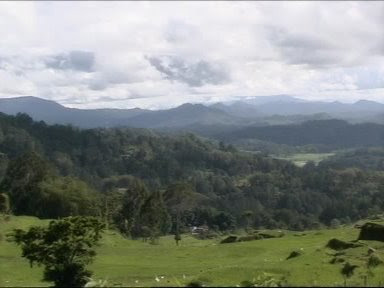The Torajans are believed to belong to the same Proto-Malay group as the Dayaks of Kalimantan and the Bataks of Sumatera. However, there are many similarities ethnologically betwen them and the people of ancient Annam, from where they could have originated, migrating to their homeland in waves, crossing the seas in their sailing boats which set the pattern for their tongkonan houses.
 |
| Toraja People - Toraja Traditional Clothes |
From early times, the society war divided into classes with the nobles at the top of the social structure and the slaves, who were either hereditary or enemies who were captured in battle, lowest ranking.
 |
| Pa'Randing - Toraja War Dance |
The caste system warp widely practised in Toraja and consisted of :
Tana' bulaan ; referring to the noble class who functioned as adat chiefs using titles such as puang, siambe' and ma'dika.
Tana' Bassi ; the lower noble class of assistant adat or traditional chiefs or members of the community councils.
Tana' Karurung, the commoners, among them priests.
Tana' Kua-Kua ; the lowest class of slaves and workers, including the death priests or tomebalun.
Still practised to some extent today, the caste system is adhered to during traditional rituals, particularly the death ceremonies for which no one can aspire to rites intended for a higher caste.
The social structure allows equal rights for men and women, especially in inheritance for which neither sex nor age is of any consideration. Division of inheritance depends wholly on service to the contributors made by members of the ramage, kinship group at the death ceremonies.
~o~













